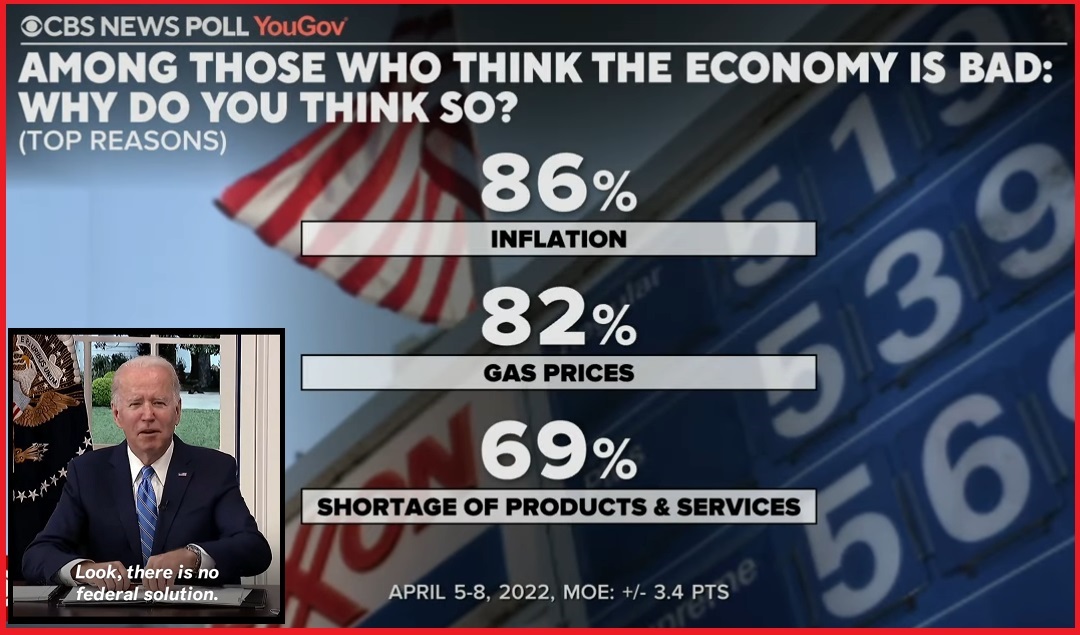Retailers Preparing for Recessionary Drop in Spending, Many Outlets Will Not Survive…
All things considered, a remarkably honest article from CNBC outlines the likelihood for a wave of retail bankruptcies. In part the issue is driven by COVID bailout and stimulus funds that inflated the balance sheets and hid the natural contraction that was taking place in the last half of 2021 through today. However, bar far the biggest issue is a contraction in current consumer spending due to severe cost increases in housing, food, fuel and energy.
 As we have discussed at length, consumer spending patterns shifted radically in the last year.
As we have discussed at length, consumer spending patterns shifted radically in the last year.
Despite the 2021 third and fourth quarter giving the artificial impression of strong demand, inventories were climbing and productivity in the manufacturing and services dropped dramatically. In combination these two data points both indicated a contraction in demand.
The first quarter of 2022 showed a -1.5% overall GDP. The second quarter ends next week, and the government data will be released in the last week of July. I predict that Q2 data will be heavily manipulated in two ways: (1) manipulation of import data via the Ports of Long Beach and Los Angeles; and (2) the intentional use of a lower inflation rate than currently exists in all goods. My best guess on the fake BEA numbers is a +0.2 to +0.5% positive GDP, thereby barely avoiding the technical definition of a recession.
That said, the CNBC article outlines a very bad scenario for retailers, as the consumer spending contraction hits their profit and loss statements.
(CNBC) – […] There could be an increase in distressed retailers beginning later this year, experts say, as ballooning prices dent demand for certain goods, stores contend with bloated inventory levels and a potential recession looms.
[…] The latest retail sales data shows where consumers are pulling back the most. Advance retail and food service spending fell 0.3% in May versus the prior month, the Commerce Department reported last week. Furniture and home furnishings retailers, electronics and appliances stores, and health- and personal-care chains all saw month-over-month declines.
 “Consumers aren’t just buying less stuff, they are shopping less, which means a loss of the impulse-shopping moments that are critical to retail growth,” said Marshal Cohen, chief retail industry advisor at NPD Group, a market research firm.
“Consumers aren’t just buying less stuff, they are shopping less, which means a loss of the impulse-shopping moments that are critical to retail growth,” said Marshal Cohen, chief retail industry advisor at NPD Group, a market research firm.
In the first three months of 2022, consumers bought 6% fewer items at retail than they did in the first quarter of 2021, NPD Group said in a survey issued in late May. More than 8 in 10 U.S consumers said they planned to make further changes to pull back on their spending in the next three to six months, it said.
[…] Rising inventory levels are also on bankruptcy advisors’ radar because they have the potential to lead to much bigger problems. Retailers from Gap to Abercrombie & Fitch to Kohl’s have said in recent weeks that they have too much stuff after shipments arrived late and consumers abruptly changed what they were shopping for.
Target said earlier this month that it’s planning markdowns and canceling some orders to try to get rid of unwanted merchandise. As other retailers follow suit, profits are going to contract in the near term, said Joseph Malfitano, founder of turnaround and restructuring firm Malfitano Partners.
And when a retailer’s profit margins shrink as its inventories are reappraised — a routine practice in the industry — those inventories won’t be worth as much, Malfitano explained. A company’s borrowing base could fall as a result, he said.
“Some retailers have been able to cancel orders to not create more of a bubble on inventory. But a lot of retailers can’t cancel those orders,” Malfitano said. “So if the retailers that can’t cancel orders don’t knock it out of the park during the holiday season, their margins are going to go way down.” (read more)






Post a Comment